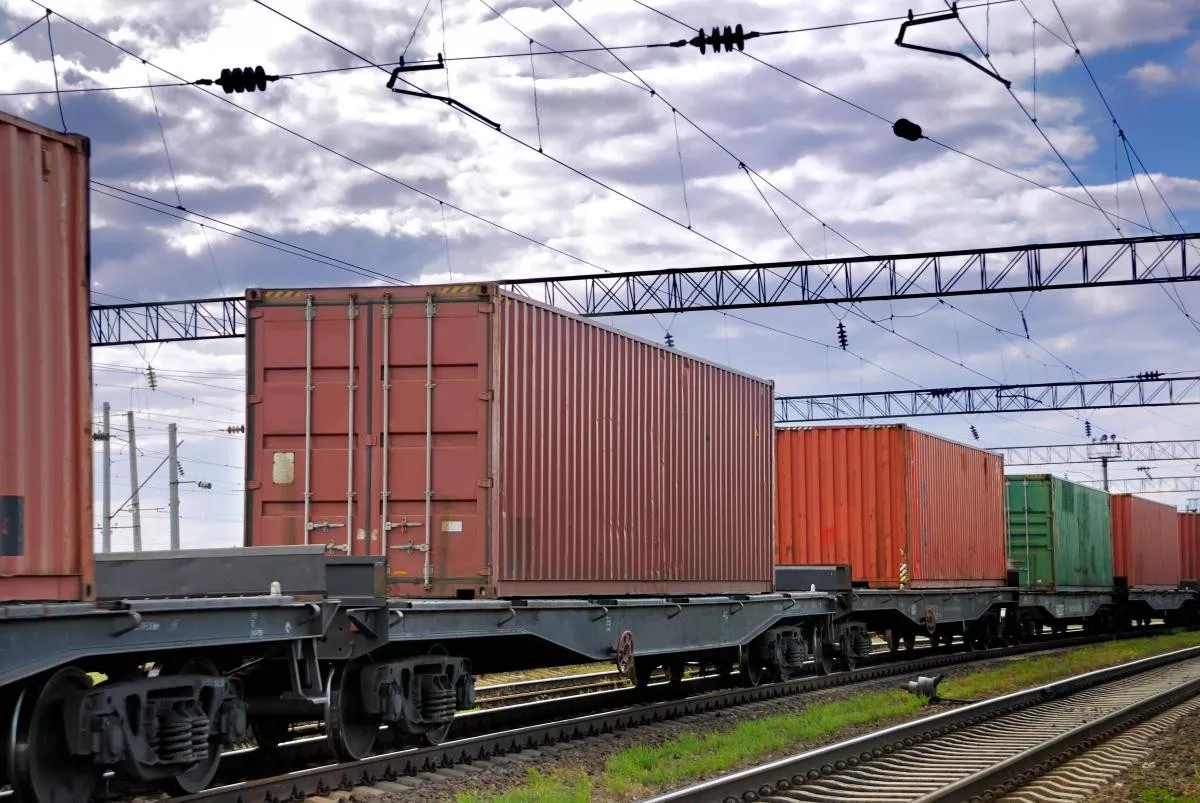Azerbaijan’s goodwill transport gesture toward Armenia A new era of railway connectivity in the South Caucasus
On the evening of November 5, 2025, a historic event took place — for the first time since the collapse of the USSR, a freight train from Russia carrying 15 wagons of grain arrived in Armenia via Azerbaijan and Georgia. In addition, another train transporting Kazakh grain also reached Armenia through the same route.

At a press conference in Yerevan, Alexey Melnikov, Director of the South Caucasus Railway company, stated that the launch of grain deliveries from Russia through the territories of Azerbaijan and Georgia marks “the beginning of a new chapter.” According to him, the new route will help ease congestion at the Upper Lars checkpoint on the Georgia–Russia border and reduce the cost of transporting goods to Armenia, which previously relied on the relatively expensive Black Sea route via Georgian ports.
“Now we have the opportunity to deliver cargo from Armenia to Kazakhstan, Russia, and other countries. We can even organise container shipments to China. For our partners importing goods into Armenia — such as grain and petroleum products — this route is of great importance. It will be in high demand among our partners,” Melnikov noted.

Russian Deputy Prime Minister Alexey Overchuk also welcomed the launch of railway communication between Russia and Armenia through the territories of Azerbaijan and Georgia. He expressed gratitude to Georgia, as well as to his colleagues — Azerbaijan’s Deputy Prime Minister Shahin Mustafayev and Armenia’s Deputy Prime Minister Mher Grigoryan — for their joint efforts in unblocking transport links across the South Caucasus region.

Armenian Prime Minister Nikol Pashinyan described the arrival of the grain train in Armenia via Azerbaijan and Georgia as an important and historic event. According to him, the situation is evolving almost daily, as an increasing number of applications for transit along this route — in both directions — continue to be received. Pashinyan also confirmed Armenia’s readiness to facilitate the transit of freight trains.
The start of grain and other goods transit to Armenia by rail through the territories of Azerbaijan and Georgia is indeed a “historic breakthrough.” This is especially significant when recalling how much effort the Armenian lobby had invested not long ago to open railway transit to Armenia.
In particular, the Armenian lobby in Russia had been actively pushing for the organisation of freight transit through the occupied Georgian region of Abkhazia — without the de-occupation of Abkhazia or the return of Georgian refugees (many of whose homes and apartments are still illegally occupied by ethnic Armenians). The goal was to overcome Armenia’s “railway isolation,” but without addressing the Karabakh issue. Yet, that issue could never have been resolved by any means other than through the de-occupation of Azerbaijani territories and the elimination of the separatist entity known as “Artsakh.”
Looking further back in history, the Abkhaz war itself was, to a large extent, provoked by the very question of railway transit for Armenia.

In the summer of 1992, Georgian President Eduard Shevardnadze ordered the deployment of troops to Abkhazia to take control of the railway and ensure uninterrupted cargo transit to Armenia — largely at the insistence of the Armenian government. At the time, the Georgian authorities underestimated the fact that the Armenian side was simultaneously supporting Abkhaz separatism, which was developing according to the same pattern as the “Artsakh” scenario.
As a result, Georgia found itself caught in a kind of “geopolitical trap.” The Abkhaz separatists, encouraged by their Kremlin patrons, met the Georgian army with gunfire, while the local Armenian community, the Armenian lobby in Russia, and Armenia itself effectively sided with the separatists — considering such support more important than maintaining railway transit. The outcome of the 1992–1993 war is well known: Abkhazia was torn away from Georgia, accompanied by the ethnic cleansing of the Georgian population.
Because of the wars in Abkhazia, the Tskhinvali region, and Karabakh — as well as the existence of separatist “projects” — the strategically important transport routes of the South Caucasus were blocked for decades. Ultimately, this harmed Armenia itself, which had been an active supporter of separatism and border revisionism.
For decades, Armenia — isolated from convenient and affordable railway transit — effectively undermined its own economy. The high cost of transporting goods by road through the “bottleneck” of the Upper Lars checkpoint (which was frequently closed in winter due to weather conditions) directly affected prices on the Armenian market, driving them up. Any production in Armenia that depended on low-cost logistics became unprofitable, while Armenian goods lost their competitiveness on foreign markets. As a result, living conditions in Armenia grew increasingly difficult, forcing hundreds of thousands of citizens to leave the country for economic reasons.
Throughout these years, Armenian authorities desperately searched for ways to overcome the railway blockade. Even the completely unrealistic — due to its exorbitant cost — project of building a railway from Iran to Armenia pursued the same goal: to overcome isolation by “bypassing” Türkiye and Azerbaijan. The rationale behind this project was based on the assumption that cargo could be transported from Russia to Armenia through Central Asian countries and Iran, as long as Azerbaijan was avoided.
Today, it has become clear that all these sacrifices, wars, hardships, and decades of stagnation under the railway blockade could have been avoided. All that was required was to renounce territorial claims and initiate a peaceful process with Azerbaijan.
It is important to note that Azerbaijan unblocked railway transit for Armenia even before the conclusion of a full peace agreement. This was done as a gesture of goodwill, in the hope of a positive response from the Armenian side.
The opening of railway transit to Armenia via Georgia and Azerbaijan is just the beginning of a “long journey” toward the full unblocking of transport links in the South Caucasus. In the long term, several interchangeable routes of the Middle Corridor are expected to run through the region. The South Caucasus has the potential to become the main transit hub of Eurasia.

Undoubtedly, traffic along the Zangezur Corridor must begin. It is worth recalling that during the Soviet era, this route was effectively the main connection for transport between Armenia and other republics. Railway links could also be restored between Gyumri in Armenia and Kars in Türkiye.
The restoration of railway connections through Abkhazia remains a relevant issue — but only on the condition of its de-occupation, the return of Georgian refugees, and the restoration of Georgia’s territorial integrity.
By Vladimir Tskhvediani, Georgia, for Caliber.Az








